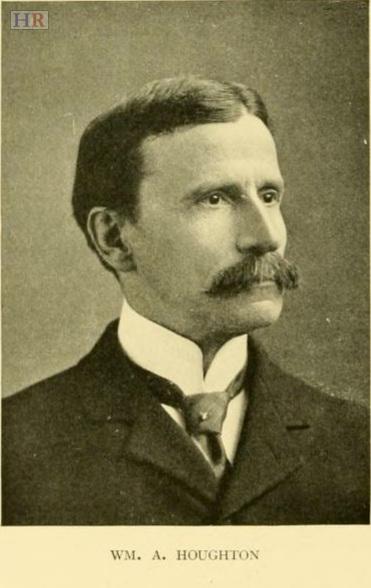Holliston's Poets
This town of thirty-seven thousand, which fluctuates to nearly twice this number when its colleges are in session, was once home to two of the most internationally famous poets in modern history– namely Emily Dickinson and Robert Frost. Today, no grade school student receives his or her diploma in this state, let alone this country, without either gladly or begrudgingly hearing their words in high school English classes. While both rose to fame at different times and had their own unique outlooks on life, what they did have in common was that they had both been brought to this Western Massachusetts town by Amherst College, with Dickinson’s grandfather as one of its prominent founders and Frost as one of the English professors there decades later. However, though these two are among the most distinguished and popular authors the literary world has ever seen, there has never been a shortage of published poets in Massachusetts and Holliston had a noted few itself.

William Houghton, perhaps the one best remembered today, was born in Holliston in 1852. After being privately tutored for a number of years he entered Yale in 1869 and four years later graduated with a bachelor’s degree in English. During his time at Yale he had attained a fair amount of scholarly distinction, graduating fifth in his class (out of 113) and also serving as the class orator. Upon graduation he entered his first job as the principal of the preparatory department of Latin and Greek at Olivet College in 1873, and by 1877 he had obtained the honor of being professor of English at the University of Tokio [sic]. Despite the titles and chairmanships he held in the years to followed, he never did forget his childhood home in Holliston, and immortalized his sentiment for the town in his 1911 idyll The Pond. It is for this picturesque description that Houghton Pond (not to be confused with Houghton’s Pond of Milton) was so named. Though Houghton’s own name is forgotten today, his poetry was reportedly a modest success at the time, and his work has been remembered obscurely thanks to excerpts of his poem printed in a few of the Holliston Historical Society’s more recent books. As the opening stanza goes-
Happy the man recollection fond
Pictures a boyhood passed beside a pond
Nay, on it, in it, by its every shore,
Swimming and boating, skating-evermore.
Delighting in its ever-changing mien.
Ruffled and dark, or sunny and serene.
His poem’s tone varies from reminiscent to bittersweet though; such recollection held an Edenic air in a time when, as another native scholar had put it, “the nations of the earth [were] re-converting their plowshares and pruning hooks, into swords and spears”.
Yet till the world’s imperious command
Scattered us widely up and down the land,
Man-grown, we sought the Pond in Winter, Spring,
Summer, Autumn, never wearying,
And ever, when returning to those haunts,
Whether gay June her sumptuous beauty flaunts,
Or grim December boasts his ice—as then,
We swim or skate, and dream we’re boys again.
Anyone wishing to read more of his reflections, can read the entire poem online at the Internet Archives. http://archive.org/stream/pondidylofboyhoo00houg#page/n0/mode/2up
None of the other poets from our town seem to carry quite as much weight as Houghton had, but there were still a noteworthy few whose works came into print. As I’d mentioned in one of my previous articles, Arial Bragg, the namesake village’s founder was a bit of a poet himself and much of his singsong rhyme can be found in the last pages of his memoirs. http://archive.org/stream/memoirsofcolaria00brag#page/54/mode/2up
With a few exceptions, the only other Holliston poet whose work seems to have been published to some degree was one “Currie Gregg”, whose poems show up in a small booklet called The Spirit Dirge
http://archive.org/stream/spiritdirgeother00greg#page/n1/mode/2up which was published in 1850 by a Holliston printer and sold at bookstands to the tune of 37 and a half cents. Nothing is known about Gregg outside his packet of poetry. The name “Currie Gregg” itself might not say much; it seems possible that is was likely little more than a pseudonym. In this volume our faceless poet switches off between themes of awe in nature, time, and God, with a few clever episodic poems scattered throughout, such as his dark rhyme - The Zephyr and the Rose. Although he’d been published by a sole Holliston printer, Gregg’s poetry seems to have to circulated amongst literary collectors with time. Today about twenty copies of his booklet have been passed through college libraries across the country - a surprising figure when you consider the number published could have been little more than a few hundred.
So there you have three small-time poets in Holliston’s history. We may have never had an Emily Dickinson or Robert Frost, but our town has never been without the spirit of writing. Readers, do let me know if there are any more published authors I’ve left out here. Unfortunately in my search I've only come across these three and haven’t found any local women poets on the books.
I enjoyed your article about "The Spirit Dirge" and want to mention that an edition is in the Historical Society archives - the cover is blue BTW - and the author is listed as "T. G. Currier." Intriguing - as is the poem itself. Who the author is, well, that's as mysterious as the poem. Also, a review of the poem was published in the Boston Evening Transcript in January, 1850: "Mr. Gregg evidently has the sense of poetry; but the emotional faculty with him surpasses the executive. Time and practice may balance the two." Wow, there were tough critics even back then!
Joanne Hulbert | 2012-06-06 22:27:54